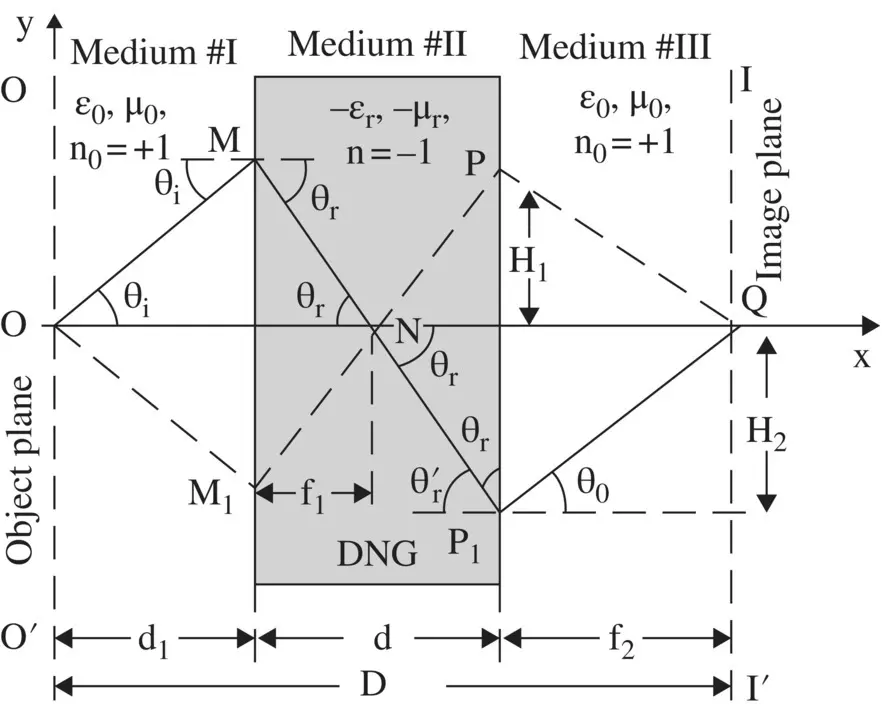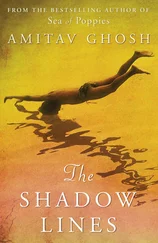Anand K. Verma - Introduction To Modern Planar Transmission Lines
Здесь есть возможность читать онлайн «Anand K. Verma - Introduction To Modern Planar Transmission Lines» — ознакомительный отрывок электронной книги совершенно бесплатно, а после прочтения отрывка купить полную версию. В некоторых случаях можно слушать аудио, скачать через торрент в формате fb2 и присутствует краткое содержание. Жанр: unrecognised, на английском языке. Описание произведения, (предисловие) а так же отзывы посетителей доступны на портале библиотеки ЛибКат.
- Название:Introduction To Modern Planar Transmission Lines
- Автор:
- Жанр:
- Год:неизвестен
- ISBN:нет данных
- Рейтинг книги:4 / 5. Голосов: 1
-
Избранное:Добавить в избранное
- Отзывы:
-
Ваша оценка:
Introduction To Modern Planar Transmission Lines: краткое содержание, описание и аннотация
Предлагаем к чтению аннотацию, описание, краткое содержание или предисловие (зависит от того, что написал сам автор книги «Introduction To Modern Planar Transmission Lines»). Если вы не нашли необходимую информацию о книге — напишите в комментариях, мы постараемся отыскать её.
rovides a comprehensive discussion of planar transmission lines and their applications, focusing on physical understanding, analytical approach, and circuit models
Planar transmission lines form the core of the modern high-frequency communication, computer, and other related technology. This advanced text gives a complete overview of the technology and acts as a comprehensive tool for radio frequency (RF) engineers that reflects a linear discussion of the subject from fundamentals to more complex arguments.
Introduction to Modern Planar Transmission Lines: Physical, Analytical, and Circuit Models Approach Emphasizes modeling using physical concepts, circuit-models, closed-form expressions, and full derivation of a large number of expressions Explains advanced mathematical treatment, such as the variation method, conformal mapping method, and SDA Connects each section of the text with forward and backward cross-referencing to aid in personalized self-study
is an ideal book for senior undergraduate and graduate students of the subject. It will also appeal to new researchers with the inter-disciplinary background, as well as to engineers and professionals in industries utilizing RF/microwave technologies.
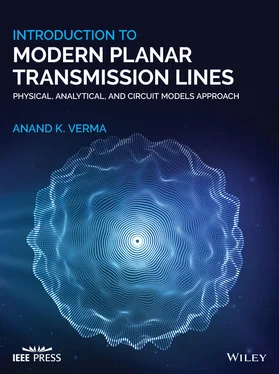
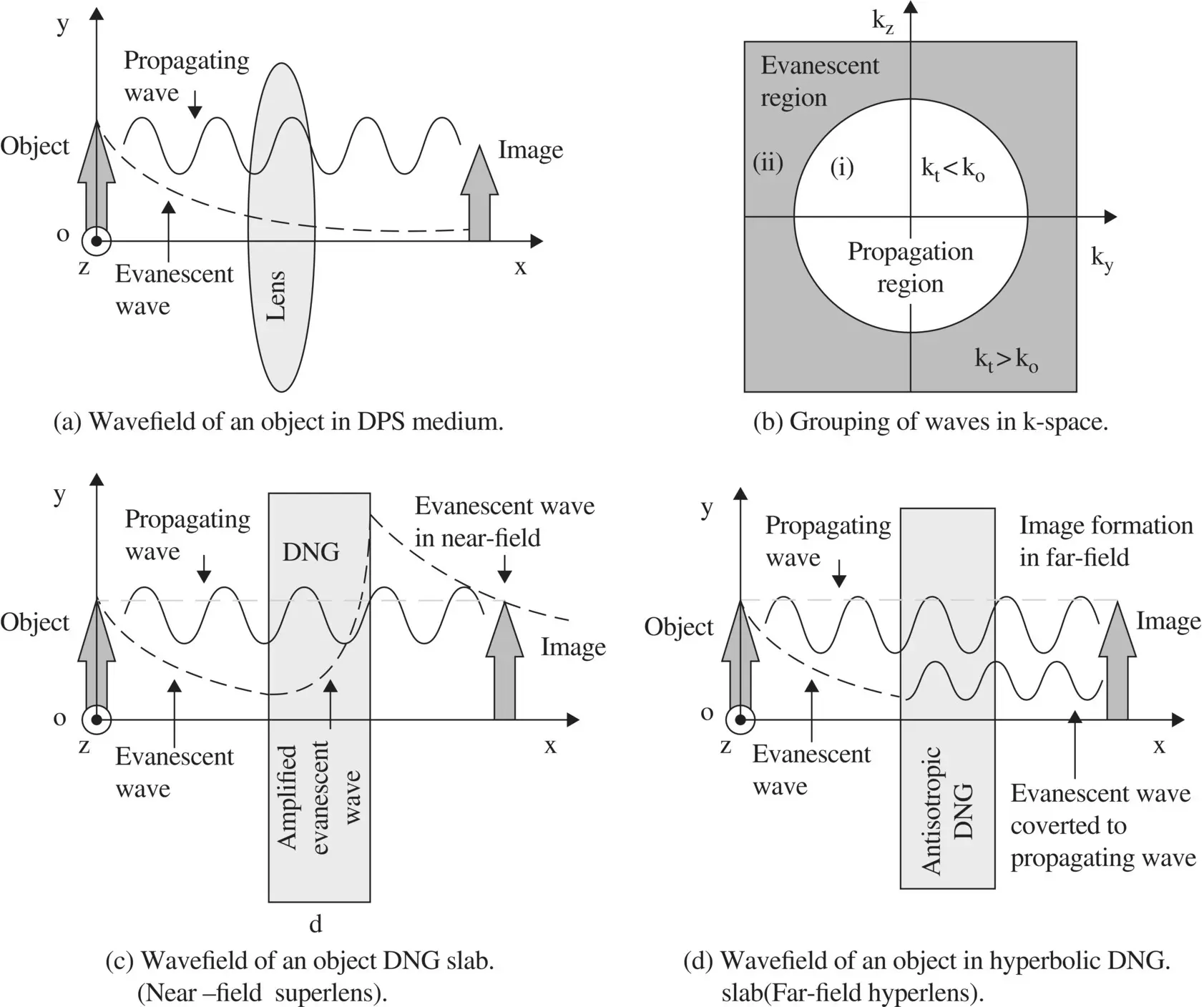

 with phase distribution within the bracket [ ] are Fourier components of the electric field
with phase distribution within the bracket [ ] are Fourier components of the electric field  . The propagation constant
. The propagation constant  of the plane wave, given by equation (5.5.27b), is obtained from the dispersion relation ( 4.5.29d) of chapter 4. The propagation constant
of the plane wave, given by equation (5.5.27b), is obtained from the dispersion relation ( 4.5.29d) of chapter 4. The propagation constant  of propagating plane waves must be a real quantity, whereas imaginary values of
of propagating plane waves must be a real quantity, whereas imaginary values of  provide decaying evanescent waves in the x‐direction. Thus, Fourier components of the wave originated by an object could be divided into two groups: propagating waves and nonpropagating evanescent waves . The grouping of waves is shown in Fig (5.12b). In a DPS medium, the propagation constants for both groups of waves, from equation (5.5.27b), could be written as follows:
provide decaying evanescent waves in the x‐direction. Thus, Fourier components of the wave originated by an object could be divided into two groups: propagating waves and nonpropagating evanescent waves . The grouping of waves is shown in Fig (5.12b). In a DPS medium, the propagation constants for both groups of waves, from equation (5.5.27b), could be written as follows:
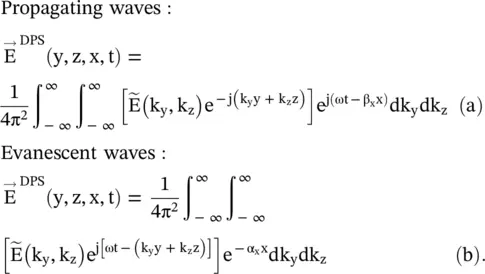
 at the cut‐off wavenumber k x= 0 determines the limit of the finer spatial details, i.e. the diffraction limit:
at the cut‐off wavenumber k x= 0 determines the limit of the finer spatial details, i.e. the diffraction limit:
 . Figure (5.13)shows the angles of incidence θ iand refraction θ rand other geometrical dimensions. Snell's law for the DNG slab is written below:
. Figure (5.13)shows the angles of incidence θ iand refraction θ rand other geometrical dimensions. Snell's law for the DNG slab is written below:

